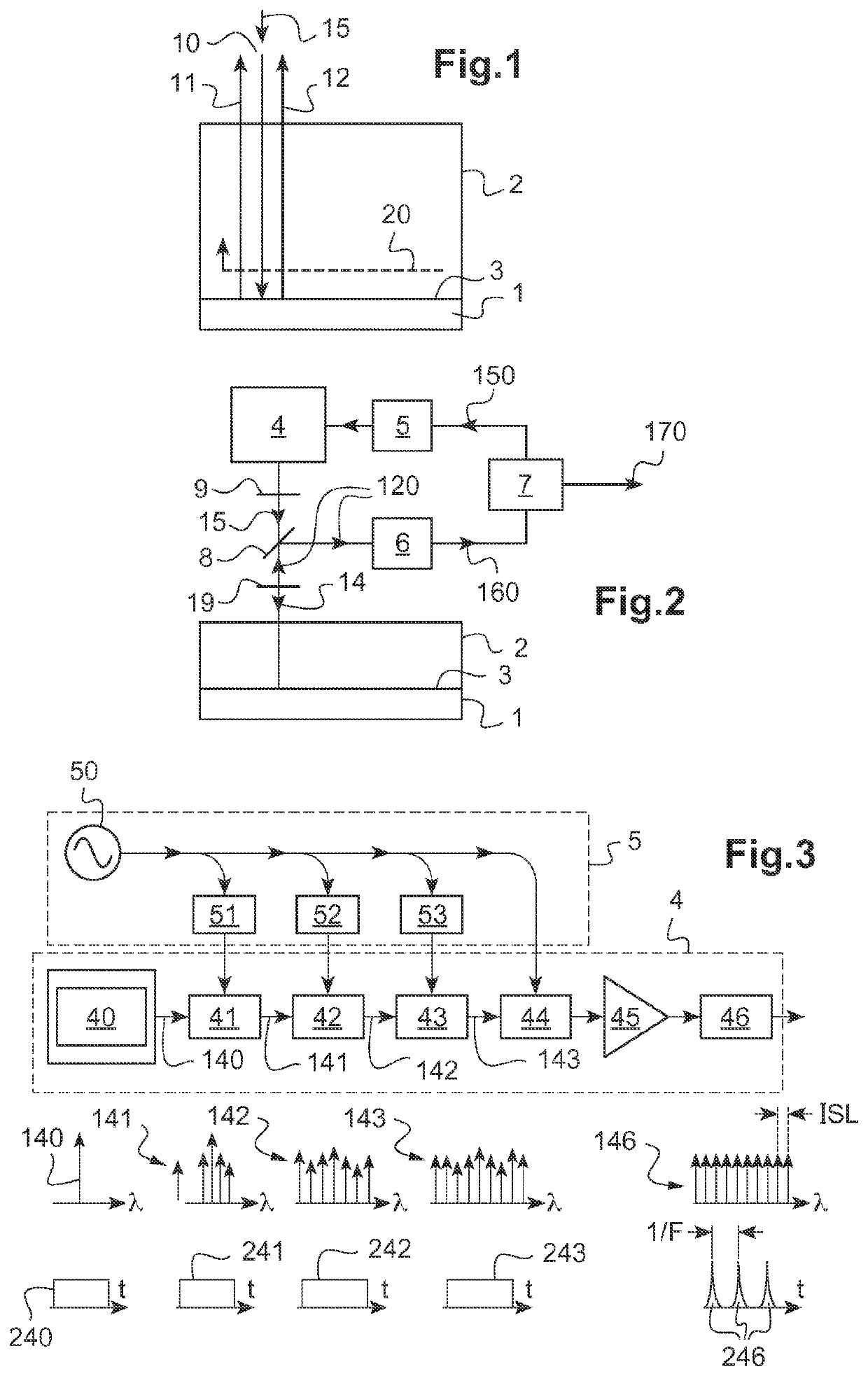Acoustic resonance spectrometry system and method
a spectrometry and acoustic resonance technology, applied in the field of brillouin scattering measurement system and non-destructive analysis of samples, can solve the problems of indentation, destructive nature, complex quantitative analysis of indents,
- Summary
- Abstract
- Description
- Claims
- Application Information
AI Technical Summary
Benefits of technology
Problems solved by technology
Method used
Image
Examples
first embodiment
[0056]FIG. 2 schematically shows an acoustic resonance spectrometry system according to the invention;
[0057]FIG. 3 schematically illustrates the structure and operation of a pulse source of the optical comb type;
[0058]FIG. 4 illustrates a configuration for the resonant Brillouin scattering measurement according to a first embodiment of the invention;
second embodiment
[0059]FIG. 5 illustrates a configuration for the resonant Brillouin scattering measurement according to the invention;
third embodiment
[0060]FIG. 6 illustrates a configuration for the resonant Brillouin scattering measurement according to the invention;
PUM
| Property | Measurement | Unit |
|---|---|---|
| thicknesses | aaaaa | aaaaa |
| repetition frequency | aaaaa | aaaaa |
| repetition frequency | aaaaa | aaaaa |
Abstract
Description
Claims
Application Information
 Login to View More
Login to View More - R&D
- Intellectual Property
- Life Sciences
- Materials
- Tech Scout
- Unparalleled Data Quality
- Higher Quality Content
- 60% Fewer Hallucinations
Browse by: Latest US Patents, China's latest patents, Technical Efficacy Thesaurus, Application Domain, Technology Topic, Popular Technical Reports.
© 2025 PatSnap. All rights reserved.Legal|Privacy policy|Modern Slavery Act Transparency Statement|Sitemap|About US| Contact US: help@patsnap.com



